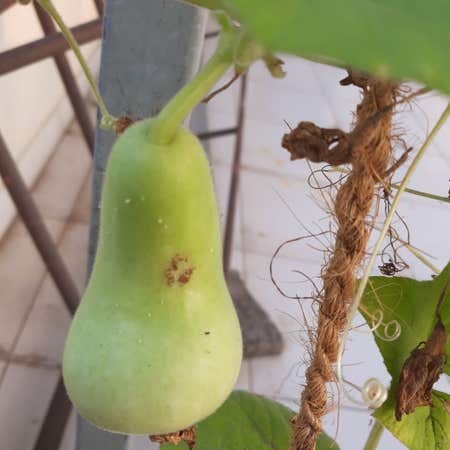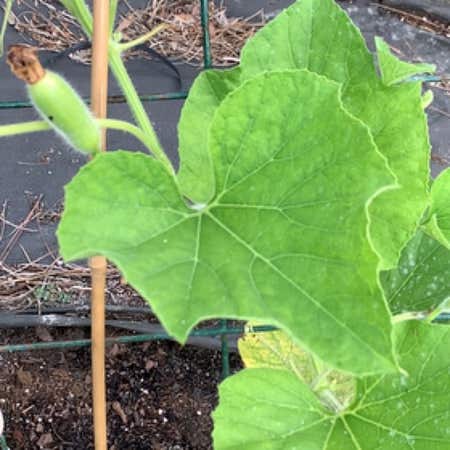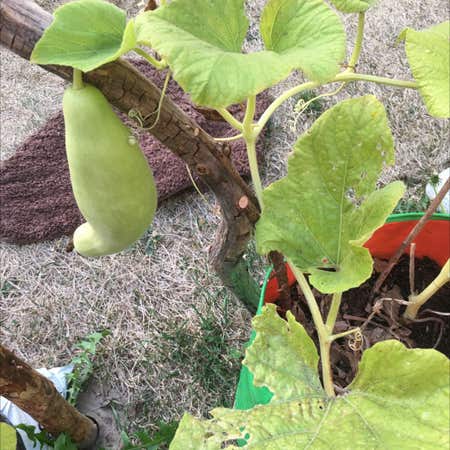





























Lagenaria Siceraria
About Lagenaria Siceraria
Bottle gourd is an annual, vining member of the squash family that is widely cultivated for its interestingly shaped fruits. The genus name derives from the Greek word, lagenos, for "vase." When dry, the fruits can be used as containers, pipes, rattles and many other uses.
Taxonomy

Lagenaria siceraria
Lagenaria
Cucurbitaceae
Cucurbitales
Also known as
Bottle gourd, Bottle gourd, Calabash, White-flowered gourd, Long melon, New guinea bean, Tasmania bean and Calabash gourds

How to care for Lagenaria Siceraria
How often to water your Lagenaria Siceraria

every 9
Lagenaria Siceraria needs 0.5 cups of water every 9 when it doesn’t get direct sunlight and is potted in a 5" pot.
Use our water calculator to personalize watering recommendations to your environment or download Greg for more advanced recommendations for all of your plants.

Water 0.5 cups every
9
Finding light for Bottle gourd in your home

a window
Lagenaria Siceraria love being close to bright, sunny windows 😎.
Place it less than 1ft from a south-facing window to maximize the potential for growth.
Lagenaria Siceraria does not tolerate low-light 🚫.
Select your region to see how the current weather in your area affects the placement of Lagenaria Siceraria in your home 🏡.
How to fertilize Lagenaria Siceraria

Most potting soils come with ample nutrients which plants use to produce new growth.
By the time your plant has depleted the nutrients in its soil it’s likely grown enough to need a larger pot anyway.
To replenish this plant's nutrients, repot your Lagenaria Siceraria after it doubles in size or once a year—whichever comes first.
Care Summary for Lagenaria Siceraria

Lagenaria Siceraria
 Greg recommends:
Greg recommends:
 Water
Water
0.5 cups every 9 days
 Placement
Placement
< 1ft from a window
 Nutrients
Nutrients
Repot after 2x growth
Based on the 4” pot your plant is in, and that it doesn’t get direct sunlight.

 Trending in your area
Trending in your area
 Similar to Lagenaria Siceraria
Similar to Lagenaria Siceraria
✨ Discover rare plants

Milky Widow's Thrill

Scotch Moss

Raphionacme flanaganii

Burro's Tail

Phalaenopsis schiller…

Thelocactus macdowell…

Rhipsalis clavata

Crassula 'Calico Kitt…

Hoya kalimantan

Strawberry Shake Phil…

Cleistocactus icosago…

Hylotelephium siebold…

Hoya sipitangensis

Dinteranthus microspe…

Stanhopea tigrina

Euphorbia Ammak





























